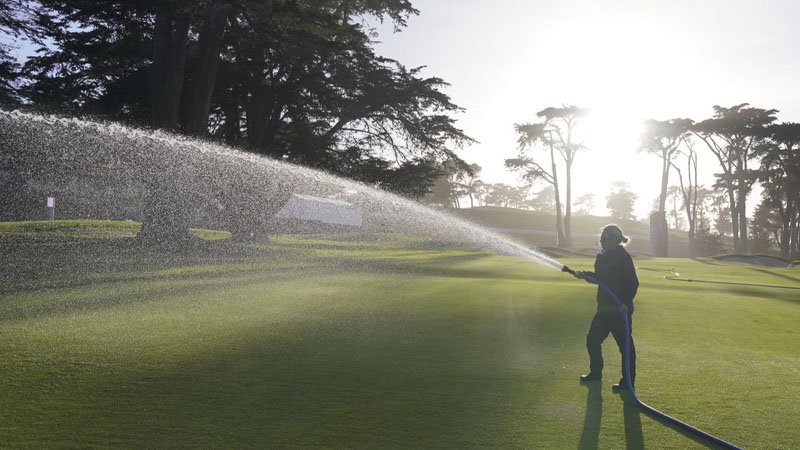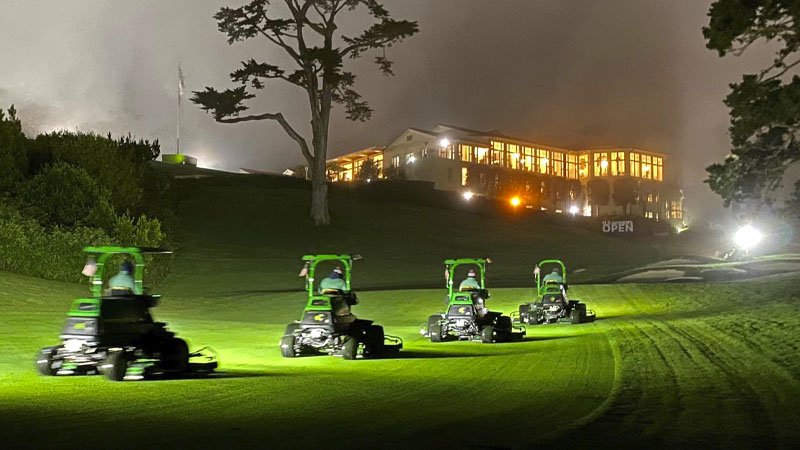
There were times during the recent U.S. Women's Open in San Francisco when it was difficult to determine whether the focus was on a golf tournament that ended in a dramatic playoff, or the people maintaining the playing surface on which the championship was contested.
Conspicuous by their uniforms, a team of nearly 30 women on the volunteer crew at The Olympic Club arguably were more visible on TV and on social media than any maintenance team at any tournament anywhere.
There is no doubt that the presence of so many women on the volunteer crew at a major championship is a positive step, but the bigger question is, after years of initiatives designed to gender diversity in turfgrass management, 'what's next?' "
For now, that answer likely will include more women on more volunteers crews and initiatives designed to attract more women to careers in turf management.
By now, the story has been told many times over. A total of 29 women, mostly superintendents, assistants and at least one academic, volunteered for all or part of tournament week. Corporate partnership by Rain Bird and Syngenta helped cover travel expenses and establish on-site career-development sessions. There also have been discussions about establishing a non-profit foundation to help set the stage for similar experiences in the future and fund scholarships for young women interested in pursuing careers in turfgrass management.
The idea of assembling a team of female volunteers came to Olympic's director of golf maintenance Troy Flanagan a few years ago, right after the USGA picked the historic venue as the site for this year's championship. He had no idea at the time that his idea might be a cornerstone for bringing change to the industry.
"I thought it would be a good idea to have as many women as possible on the volunteer crew for the Women's Open," said Troy Flanagan, director of golf maintenance at Olympic. "What I wasn't prepared for was the impact it would have."
Many of the volunteers described the experience as "life-changing" and even Flanagan became emotional when discussing what it meant now and could mean in the future.
"The first thing I noticed was the camaraderie between them. I thought they all knew each other, but it was anything but it was anything but that," he said. "The energy they had was amazing. Every day, they wanted to show the world that they were here to work, work hard and provide the best golf course possible. They know they have to outwork men to prove themselves, and they came ready to do just that. I heard the words 'life-changing' several times."
On one hand, the presence of so many women helping prepare one of the most revered courses in all of golf for such a high-profile event shows the strides women are making toward gender equality in an industry historically dominated by men. On the other hand, that so many are compelled to recognize their accomplishments based, even in some small part, on gender, shows how much work remains in acknowledging the contributions of women in this industry on merit alone.

"We don't want distinction because we are female, or because we are different," said Sally Jones, general manager and superintendent at Benson Golf Club in St. Cloud, Minnesota, and a volunteer at Olympic during the Open. "We want to do this because we want more of us out here. We want more women in this business. What drove me to pick this career was always being told 'no' by people who didn't think I could do this as a woman."
Shelia Finney, senior director of member services for GCSAA and a former golf course superintendent of 25 years, was on site at Olympic and says there are a number of reasons why young women in the field of turfgrass are outnumbered in the classroom and the golf course.
"Change is very slow. When you are trying to change something, the demographics of an industry or association, what you are talking about is encouraging people to get into this industry. But, if all they see is white males . . . ," Finney said.
"There is a general lack of knowledge among young women that this is a career option. They don't see it as a viable career and that you can make a good wage. That's why things like this (at Olympic) are important, because you are sending the subliminal message that 'if you can see it, you can be it.' "
Of the approximately 19,000 members of GCSAA, 324 are women, Finney said. That number is up from 200 just two years ago. Of those 324 women, 56 are assistants, an increase of 180 percent from five years ago.
There are about 14,700 golf courses operating nationwide. The GCSAA has a member in about 48 percent of them.
"We acknowledge that we are in about half the golf courses," Finney said. "So, there may be more (women superintendents) out there."
Through her position with GCSAA, Finney spends a significant amount of time and energy recruiting students for potential careers in turfgrass management and speaks to a lot of kids at career day and First Green events.
Beth Guertal, Ph.D., of Auburn University also was at Olympic, and she, too, beats the pavement to get out and speak to high school students and others, including a lot of girls, about potential careers in turf management.
While she acknowledges there is still much work to do to attract more women into the industry, she too has noticed a change in the industry in recent years.
"There has been some cultural tone deafness. It’s changing," Guertal said. "We're getting more women into leadership roles."
During the Women's Open at Olympic, discussions turned toward establishing a non-profit foundation to help fund future career-development opportunities for working professionals and scholarships for young women. Although that idea is only in the discussion phase, funding ideally would come through corporate donations and sponsorships, Jones said. According to Finney, rather than establish a new foundation from scratch, those needs could be met through the GCSAA Foundation.
"I think you will see something happen on that in the near future, not the far future," Finney said.
"Why reinvent the wheel? With the GCSAA Foundation, we can set that up within a month or two. We just need the funds."

